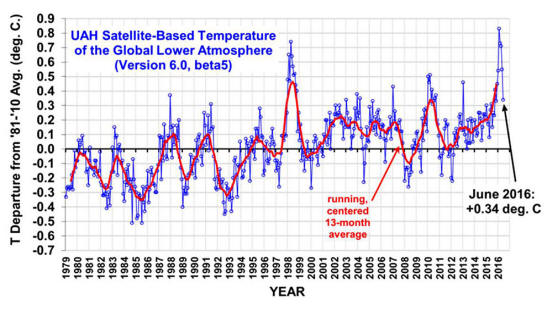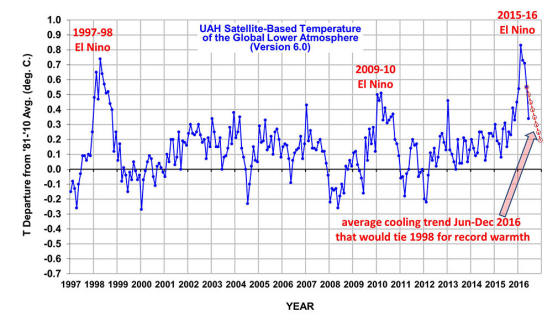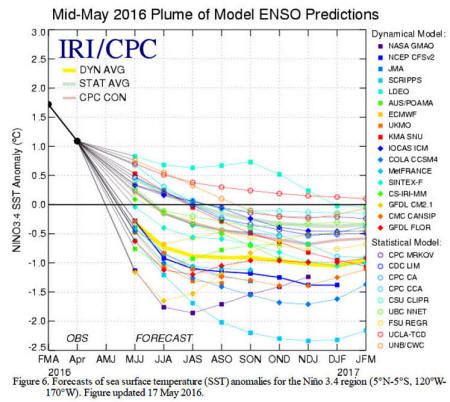NOTE:
This is the fifteenth monthly update with our new
Version 6.0 dataset.
Differences versus the old Version 5.6 dataset
are discussed
here.
Note we are now at "beta5" for Version 6, and the paper
describing the methodology is still in peer review.
The
Version 6.0 global average
lower tropospheric temperature (LT)
anomaly for June, 2016 is +0.34°C, down 0.21°C from the May
value of +0.55°C (click for full size version):

This
gives a 2-month temperature fall of -0.37°C, which is the second
largest in the 37+ year satellite record…the largest was -0.43°C
in Feb. 1988.
In
the tropics, there was a record fast 2-month cooling of -0.56°C,
just edging out -0.55°C in June 1998 (also an El Niño weakening
year). The
rapid cooling is from the weakening El Niño and approaching La
Niña conditions by mid-summer or early fall.
As promised just
over a week ago,
here's how we are now progressing toward a record warm year in
the satellite data:

The June anomaly is well below the dashed red line which
represents the average cooling rate required for the rest of
2016 to tie 1998 as the warmest year in the satellite record.
So
far my prediction that 2016 will end up being a new record warm
year is not shaping up too well… the cooling we are seeing in the
troposphere really is spectacular.
Just
remember, the temperature anomaly can also temporarily rebound
for a month, as it did in late 1998.
The "official" UAH global image for June, 2016
should be available in the next several days
here.
Source




